In general, impact crushers both vertical shaft (VSI) and horizontal shaft (HSI), the main difference from the cone crusher is the type of crushing force. The impact crusher crush by material impacting another object. The cone crusher uses compression crushing to squeeze or compress the material between the two crushing surfaces. The type of crusher and the selection of crushing process for any application depend on the material hardness, material density, feed size, required product size and capacity and the initial cost of each crusher and the cost of maintaining each type of crusher.
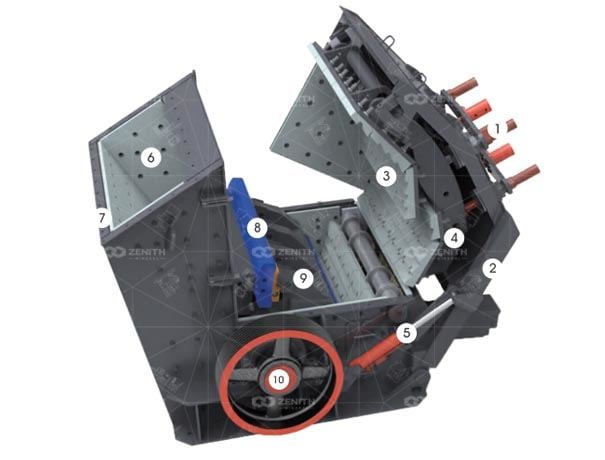
Horizontal Shaft Impact crusher consist of a hopper, two or three aprons, a rotor, and blow bars or hammers. Basically, large products are fed into the hopper where they come into contact with hammers or blow bars to a spinning rotor which crushes the material into smaller pieces. As the larger material gets impacted by the hammers, it comes into contact with each apron rebounding it back to the rotating hammers for another round of impacting until it is discharged out of the HSI.
Vertical Shaft Impact crusher consist of a feed hopper, a feed tube, a rotor, and either stationary anvils or rock shelves. Essentially, feed material drops through the feed tube into the rotor, which, through centrifugal force, throws the material against stationary anvils made up of composite metal alloys or rocks (through the installation of a rock shelf). When the rock impacts on the anvils or rock shelves, it shatters along natural stress lines, creating a uniform, cubical product.
Cone Crushers consist of a bowl liner, a mantle, both main shaft and frame, compression, and an eccentric inner and outer bearing. Essentially, material is reduced in size by squeezing the material until it breaks. Specifically, the material is compressed between a moving piece of steel, the mantle, and a stationary piece of steel, the bowl liner. The final product’s size is determined by the closed-side gap setting between the two crushing members at the bottom. As the cone eccentrically rotates, the material is crushed and works its way down through the crushing chamber, until it discharges at the bottom of the machine.
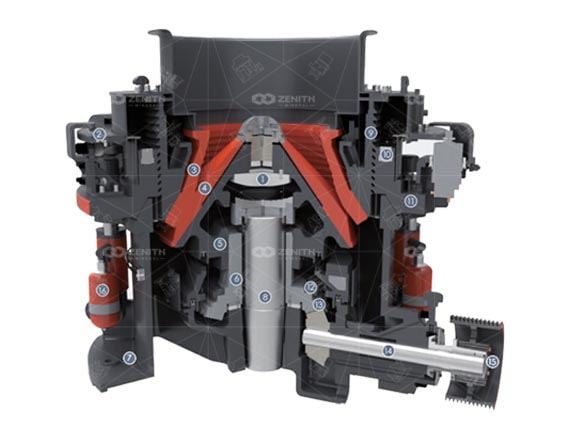
In order to understand Cone and Impact Crushing Processes, one must know the material that will be crushed, which will determine the optimal crusher for your business needs. When considering the material to be crushed, you must look at abrasiveness, hardness, density, amount of fines, and the finished particle shape you desire.
Impact Crushers are used to crush softer, less dense and abrasive material such as limestone. Because of its consistent striking process, an impact crusher produces uniform cubical finished products, which are desirable for hot asphalt producers. Depending on the application, impact crushers can have higher wear costs, higher maintenance, and produce more fines. Impact crushers may be used as a primary, secondary, or tertiary crusher depending on the producer’s final-product-size needs. These crushers are available in stationary, track and mobile designs. Another industry usage is slag, specifically blast furnace slag, which is less abrasive than steel furnace slag and can be broken down if processed through an impact crusher.
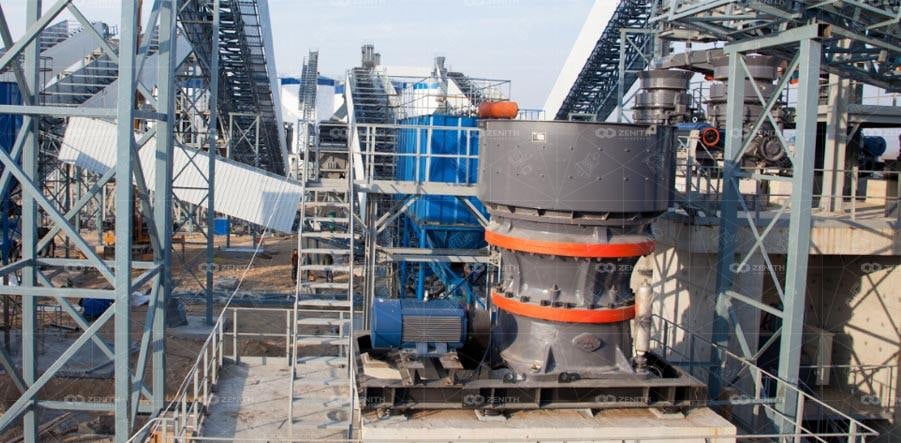
Cone Crushers are primarily used to crush harder, more abrasive and dense material, such as granite, which is used in construction, chemical, metallurgical and silicate industries. Cone crushers can be used in the primary, secondary, and tertiary position. These crushers are available in stationary, track and mobile designs. Cone crushers are also used in the steel furnace slag industry, which is a much more abrasive slag than blast furnace.
Impact crushers, initially, are less expensive than cone crushers. Although cone crushers are more expensive up front, they will require far less maintenance than impact crushers. The majority of maintenance costs on an impact crusher comes from wear on the blow bars and aprons which if used to crush highly abrasive material, may surpass the initial cost of the cone crusher. As stated earlier, producers must understand their industry needs and the materials they will mine in order to choose the optimal crusher.
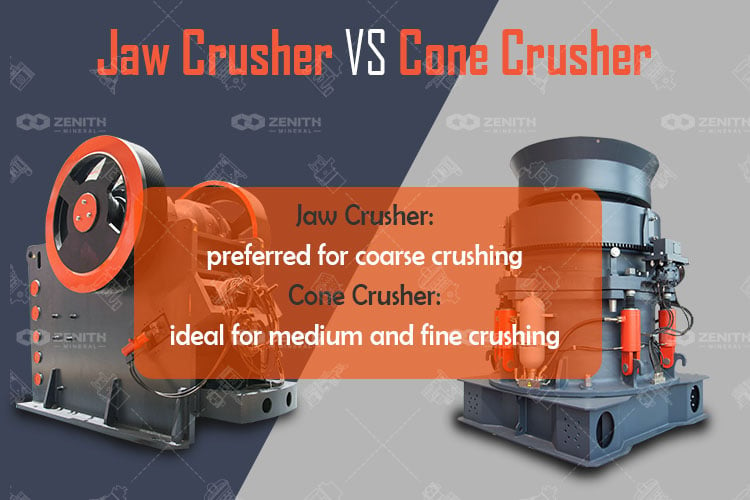
Jaw crusher and cone crusher have similar crushing principle, but different in many ways. In this article, we mainly talk about 9 key differences to help you choose the right crusher.
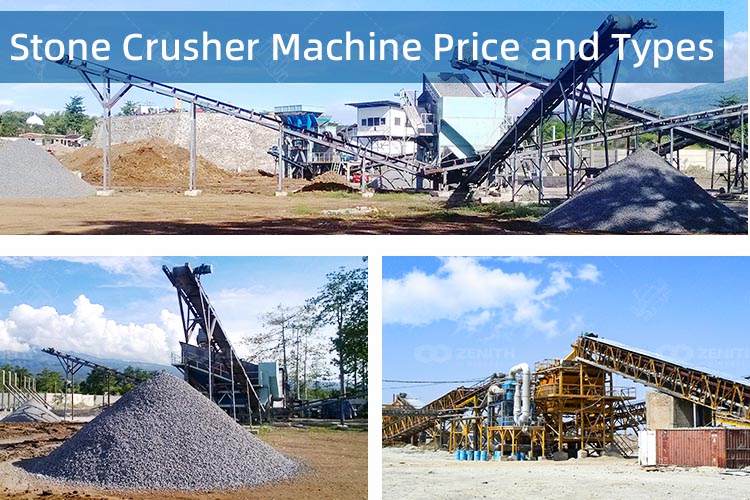
There are many types of stone crusher machines on the market. In this article, we will introduce the types and price of the stone crusher and how to select the most suitable one.

Impact Crushers may be used as primary, secondary, or tertiary crushers depending on the Producer’s final-product-size needs.
Fill your requirements here, and we'll send the custmized solution and quotation to you by the reserved contact information.